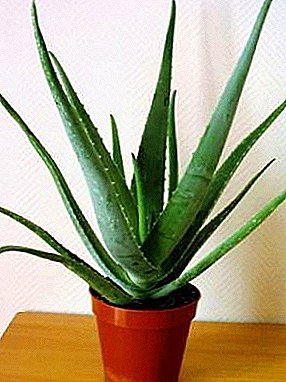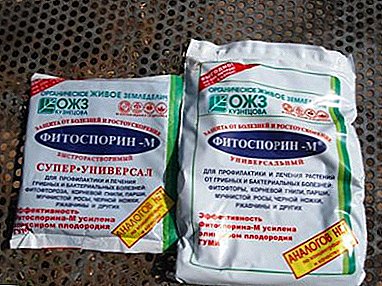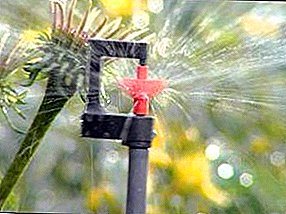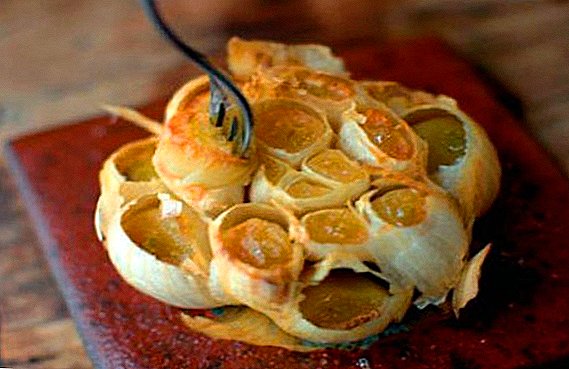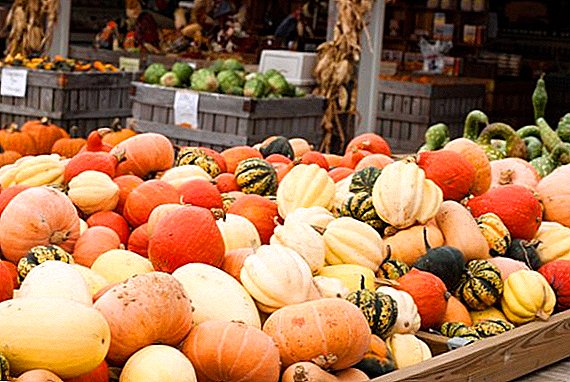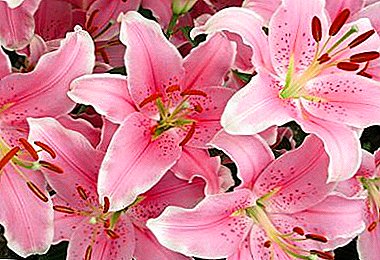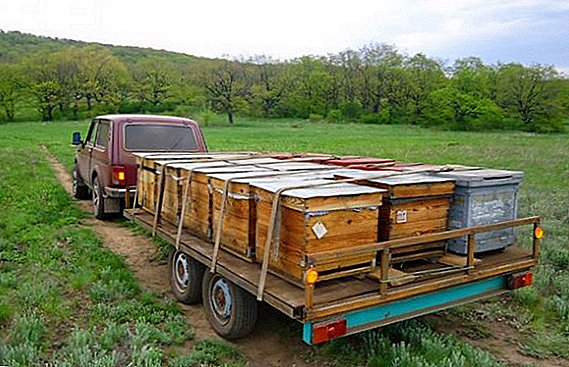
Migrating is the process of transporting bees to ensure a good honey harvest for the entire duration of the season. They spend it, most often, in mountain-forest areas, where many different honey plants grow. It is worth taking this process seriously and getting ready in advance, as the success of the season depends on it.
What is it for?
Nomadic beekeeping is one of the ways to increase honey harvest in the apiary. Bees will bring much more nectar if the distance to the honey plants is less. A bee family spends from 180 to 220 grams of honey on flights if the distance to the plants is about 1 km. When organizing an apiary, you need to place it in close proximity to honey plants. It depends on the success of the collection, because the bees will spend less effort on flights and bring more nectar.
Did you know? Even if a bee flies a considerable distance from the evidence, it can always find a way home.
How to prepare the bees to roam
Start preparing to move the apiary on wheels should be a few days before moving. 
Requirements for the apiary
- to see how places with honey plants are placed;
- it is important that the apiary is healthy and that all sanitary and hygienic standards are met;
- it is not necessary to place an apiary in the vicinity of 3.5-4.5 km from the former place, since bees can return there;
- think about the optimal use of plants that give nectar. For example, buckwheat does this only in the morning.
Nest preparation
- ensure the nests are ventilated during transport;
- pump out the frames that are filled with honey. Expand nests with additional enclosures so that the bees have a place to fold their prey in a new place;
- in order that tenants are not worn out inside, remove warming pillows;
- place the hives near the forest to protect them from wind and direct sunlight;
- provide water for the bees.
Did you know? In order for excess moisture to evaporate from nectar, a certain number of bees are constantly in the hive, which provide airing.

Beekeeper training
Much depends on the experience of the beekeeper: he is required to flawless knowledge of all the nuances. The roaming of bees creates a lot of difficulties associated with risk. It is important for the beekeeper to organize everything correctly, pick up the transport, and complete all the preparatory work in advance. It is necessary to collect all the things that will be needed in the field: medicines, dishes, food. Also, he should be able to quickly get used to the new working conditions, and this, too, must be learned.
You will also be interested to learn about the beneficial properties of different types of honey: May, Acacia, Linden, Rapeseed, Buckwheat, Chestnut, Hawthorn, Donorum, White, Espartetova, Phacelia, Coriander, Cyprian, Acicular.
Loading and moving
When in the evening the insects fly back to the hives, they are tightly closed and the gate valves are fixed with nails. In the car, they are most often placed in several tiers and tightly tied with ropes. 
When laying in 3 tiers, it is better to be safe and build up the boards of the car with boards. On the road, unforeseen circumstances may occur. To prevent such situations with a take smoke, facial nets, hammer, clay and tow.
Important! Put hives back in the direction of travel.Trucks are best used for transportation, but some use horse carts. You can transport at any time of the day, but the air temperature should not exceed 18-22 ° C. If it is too hot in the daytime, transport the hives in the morning, before the onset of the heat, or in the evening, when it subsides. If you are driving on good asphalt, you can go at normal speed. But if the road is bad with many holes, then it is better not to hurry and move slowly, going around all the irregularities.

When you transport hives on a wagon, place straw or brushwood under them so as not to damage them during shocks. Install the hives in the same way as on the machine - back in the direction of motion. This type of transport is used most often at night. Only if the road is very smooth, is it allowed to move at a trot, in other cases the movement is carried out in steps.
Important! If during transportation with the help of a bee sledge, the bees begin to fly out of the hive in large quantities, the horses must be quickly taken away and, before taking appropriate measures, they should be kept there.
Placement of hives in a new place
Once you have arrived at a new location, you need to install the hives on the pre-prepared linings. For the first flight, open the bees as soon as they calm down. After that, remove the fixtures that you used when moving. In order to calm the bees, place their hives near the bushes and trees. This is explained by the fact that the bees see landmarks near their hives and fly less on others. Do not locate the apiary so that it rests at one end on honey plants. Because of this, the bees will often fly through the most closely located evidence, and they will be filled with honey.
The roaming of bees is not an easy process and depends on many factors. The most important of these is the experience of a beekeeper. If he knows what to do and does everything on time, there will be no problems with moving and preparing. Good luck to you in this difficult task!


